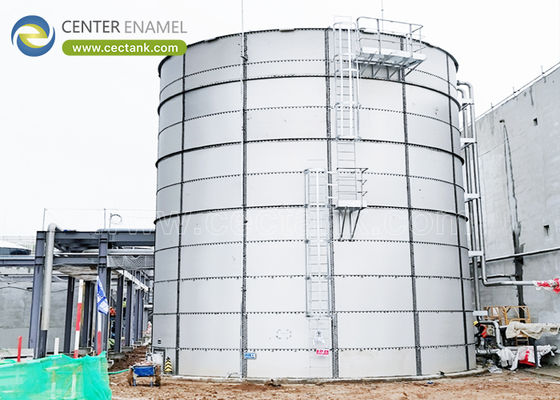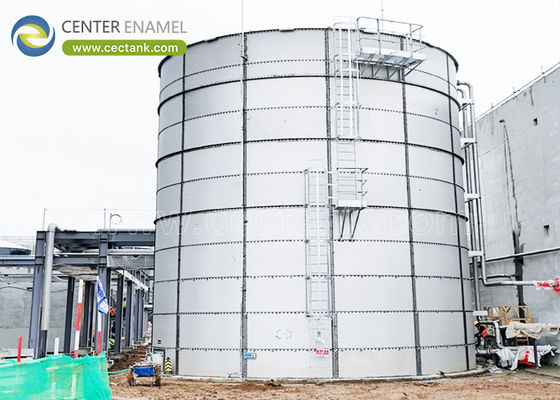-
Glass Fused To Steel Tanks (419)
-
Stainless Steel Tanks (387)
-
Fusion Bonded Epoxy Tanks (424)
-
Galvanized Steel Tanks (321)
-
Aluminum Dome Roofs (797)
-
Wastewater Storage Tanks (226)
-
Welded Steel Tanks (297)
-
Pressure Vessels (295)
-
Anaerobic Digester (201)
-
Industrial Water Tanks (349)
-
Glass Lined Steel Tanks (180)
-
Bolted Steel Tanks (181)
-
Sludge Storage Tank (115)
-
Biogas Storage Tank (173)
-
Leachate Storage Tanks (133)
-
Agricultural Water Storage Tanks (179)
-
Fire Water Tank (166)
-
Grain Storage Silos (130)
-
Biogas Projects (349)
-
Wastewater Treatment Projects (270)
-
Double Membrane Roof (177)
Stainless Steel Tanks for Industrial Mineral Storage
| Place of Origin: | China |
| Brand Name: | CEC TANKS |
| Certification: | ISO 9001:2008, AWWA D103 , OSHA , BSCI |
| Model Number: | W |
| Minimum Order Quantity: | 1set |
| Price: | $5000~$20000 one set |
| Packaging Details: | PE poly-foam between each two steel plates ; wooden pallet and wooden |
| Delivery Time: | 10-30 days after deposit received |
| Payment Terms: | L/C, T/T |
| Supply Ability: | 60 sets per month |
|
Detail Information |
|||
Product Description
Stainless Steel Tanks for Industrial Mineral Storage
Industrial mineral storage demands containers that combine chemical compatibility, mechanical strength, and ease of cleaning. Stainless steel tanks meet these needs by offering corrosion resistance, inert interior surfaces, and durable construction suitable for a wide range of minerals including aggregates, fluxes, and specialty powders. Center Enamel’s stainless steel tank systems deliver modularity, rapid deployment, and scalable capacity, enabling mineral processors to optimize storage, handling, and supply chain reliability while maintaining strict quality and safety standards.
As a leading storage tank manufacturer worldwide. Center Enamel can provide Glass Lined Steel(GLS) tanks, fusion bonded epoxy tanks, stainless steel tanks, galvanized steel tanks and aluminum geodesic dome roofs, Wastewater and Biogas Project Equipments for global customers.
| Configuration of Customized Storage Tanks | ||||
| Storage tanks | Volume | Roofs | Application | Design Requirements |
|
GLS Tanks SS Tanks Fusion Bonded Epoxy Tanks Galvanized Steel Tanks Welded Steel Tanks |
<1000m³ 1000-10000m³ 10000-20000m³ 20000-25000m³ >25000m³ |
ADR Roof GLS Roof Membrane Roof FRP Roof Trough Deck Roof |
Wastewater Treatment Project Drinking Water Project Municipal Sewage Project Biogas Project Fire Water Storage Project Oil Storage Project |
Water Supply & Drainage System Seismic Design Wind Resistant Design Lightning Protection Design Tank Insulation Design |
WasteWater Treatment Project Equipment Supply
| Pretreatment Equipment | Resource Utilization System | Sludge Treatment System | Other Equipment |
|
Mechanical Bar Screen Solid-liquid Separator Submersible Mixer |
Gas Holder Boiler System Boost Fan Bio gas Generator Torch System Dehydration and Desulfurization Tank |
PAM Integration Dosing Device Screw Sludge Dewatering Machine Slurry Separation Centrifuge |
Sewage Pump Mud Scraper Submersible Sewage Pump Three-phases Separator |
why stainless steel for minerals
Industrial minerals often present challenging storage conditions—dustiness, abrasive action, humidity, and potential chemical interactions. Stainless steel provides a non-porous, easy-to-clean surface that minimizes contamination and material interactions. Its robustness supports long service life in demanding environments, making it a practical choice for warehousing minerals in plantyards, ports, and processing facilities. Center Enamel’s approach combines corrosion resistance, hygienic design, and modularity to address a broad spectrum of mineral storage scenarios.
Key benefits of stainless steel tanks for minerals
- Corrosion resistance and longevity: Minerals can be abrasive or slightly caustic; stainless steel resists corrosion, especially grades such as 316/316L equivalents, ensuring durability in challenging atmospheres and when exposed to moisture or salt-laden air near coastal facilities. This reduces maintenance intervals and total cost of ownership over time.
- Hygiene and contamination control: The smooth interior surface minimizes particle entrapment and facilitates cleaning, reducing cross-contamination between batches of different minerals or grades. This is essential for facilities that store multiple products or require traceability.
- Structural integrity for bulk storage: Bulk minerals impose significant static and dynamic loads; bolted, modular stainless tanks provide strong, deformationally resistant enclosures with reliable load-bearing performance, while allowing phased expansions as throughput grows.
- Flexible integration with handling systems: Center Enamel designs tanks to integrate with conveyors, feeders, and discharge systems, enabling efficient material flow and minimal handling steps, which improves overall processing efficiency.
- Environmental and regulatory alignment: Stainless steel surfaces support cleanability standards and can be specified to meet internal quality protocols and regulatory expectations for bulk material storage.
Center Enamel’s design philosophy for mineral storage tanks
- Modular bolted construction: Precision-engineered bolted panels enable rapid on-site assembly, reducing installation time and enabling scalable capacity. On-site assembly simplifies logistics for remote mining sites, ports, or new plant expansions.
- Material selection and finishes: Depending on the mineral type and environmental exposure, appropriate grades and interior finishes are selected to optimize abrasion resistance, cleaning, and compatibility. Exterior coatings protect against weathering while maintaining long-term aesthetics and low maintenance.
- Customization for climate and handling: Each tank is tailored to local climate, dust levels, and unloading methods. Features such as cone bottoms, flat bottoms, or hybrid bottom configurations can be chosen to optimize flow, minimize bridging, and support automated discharge.
- Cleaning, maintenance, and inspection: Access doors, inspection hatches, and wipe-down friendly interiors enable routine sanitation and preventive maintenance, essential for minimizing downtime and extending service life.
Engineering and performance considerations
- Geometry and capacity: The tank shape and volume influence fill rates, discharge efficiency, and dust management. Round or cylindrical designs with optimized wall thickness reduce stagnation and support consistent material flow.
- Abrasive and corrosive compatibility: Minerals with abrasive characteristics or slightly acidic/basic chemistries require careful material choice and protective coatings to minimize wear and ensure a long service life.
- Seals, gaskets, and joints: Interfaces near the product contact zone are engineered for cleanability and leak resistance, with gaskets and seals selected for durability in dusty environments.
- Dust control and ventilation: Effective dust management, including venting and optional dust suppression, protects both equipment and personnel, while maintaining product quality during storage.
- Cleaning and CIP readiness: Interiors are finished to support rigorous cleaning regimes; where applicable, CIP compatibility is considered to minimize downtime and water usage.
Mineral storage scenarios and Tank configurations
- Low-volume or seasonal storage: Smaller modular tanks allow ramping capacity up with demand, making them ideal for seasonal mining operations or regional distribution hubs.
- High-throughput processing facilities: Larger installations with integrated discharge and automation support continuous operations, reducing handling steps and improving throughput.
- Coastal or humid environments: Enhanced corrosion resistance and sealing strategies protect against salt-laden air and humidity, preserving equipment integrity and product quality.
- Certifications and quality assurance: Configurations are designed to meet relevant standards for bulk material handling, with documentation supporting QA programs, audits, and supply-chain traceability.
Operational advantages for mineral storage facilities
- Consistent material quality: Stable storage conditions prevent degradation or contamination of bulk minerals, preserving downstream processing properties and market value.
- Improved handling efficiency: Integrated discharge systems and standardized interfaces streamline transfer to conveyors, crushers, or milling lines, reducing downtime and operator effort.
- Lifecycle cost efficiency: While initial investment may be higher than some alternatives, the durability and low maintenance of stainless tanks deliver long-term cost savings.
- Scalability and adaptability: Modular design supports growth, expansions, and repurposing as product lines or throughput changes, protecting capital investments.
Maintenance, cleaning, and operation best practices
- Cleaning protocols: Develop robust cleaning routines adapted to the mineral type, dust characteristics, and any coatings, with validation to support audits.
- Dust management: Implement targeted ventilation, filtration, and dust suppression measures to minimize airborne particles and improve worker safety.
- Condition monitoring: Use sensors to monitor interior conditions, flow rates, and load levels, enabling proactive adjustments to aeration or discharge strategies.
- Preventive maintenance: Establish a schedule for inspecting welds, fasteners, gaskets, and coatings; maintain a spare parts inventory to minimize downtime.
- Operator training: Educate staff on safe material handling, batch integrity, and emergency procedures to maintain a strong safety and quality culture.
Quality and compliance assurances
- Material and fabrication standards: Tanks are designed to meet international standards for bulk storage vessels, with validated surface finishes and weld quality suitable for mineral applications.
- Surface finishes and coatings: Interiors prioritize cleanability and abrasion resistance; exteriors are designed for weather resistance and easy maintenance.
- Warranty and after-sales support: Center Enamel offers warranties on structural components and coatings, supported by a global service network and readily available spare parts.
Sustainability and environmental considerations
- Recyclability: Stainless steel is highly recyclable, aligning with sustainability goals and reducing end-of-life environmental impact.
- Cleanability and water use: Hygienic interiors and efficient cleaning regimes minimize water and chemical usage, contributing to more sustainable operations.
- Lifecycle thinking: The durability and serviceability of stainless tanks reduce replacement frequency and associated embodied energy, supporting long-term environmental stewardship.
Why Center Enamel as your mineral storage partner
- Expertise in stainless storage: Center Enamel brings extensive experience in bolted stainless storage solutions for bulk materials, including minerals, with a focus on durability, hygiene, and performance.
- Global service footprint: A worldwide network supports design optimization, installation, commissioning, and ongoing maintenance, ensuring reliability across diverse markets.
- Custom design capability: From compact, site-assembly solutions to large multi-tank complexes, Center Enamel tailors configurations to mineral types, throughputs, and regional requirements.
Practical steps for customers
- Define performance targets: Establish capacity, seasonal variability, moisture or dust considerations, and required certifications or QA protocols.
- Align with downstream equipment: Ensure compatibility with conveyors, feeders, and dust-control systems to maximize throughput and minimize retrofits.
- Plan for growth: Consider phased deployments or modular expansions to align with demand and market shifts.
- Establish sanitation and safety plans: Implement cleaning procedures, dust control measures, and safety programs to protect workers and product quality.
Stainless steel tanks offer a robust, hygienic, and scalable solution for industrial mineral storage. Center Enamel’s bolted stainless steel tank systems provide a tailored approach to storage challenges across mining, processing, and distribution networks. The modular design, combined with a global support framework and emphasis on cleanability and durability, supports reliable inventory control, reduced downtime, and sustainable operations in diverse mineral markets.




